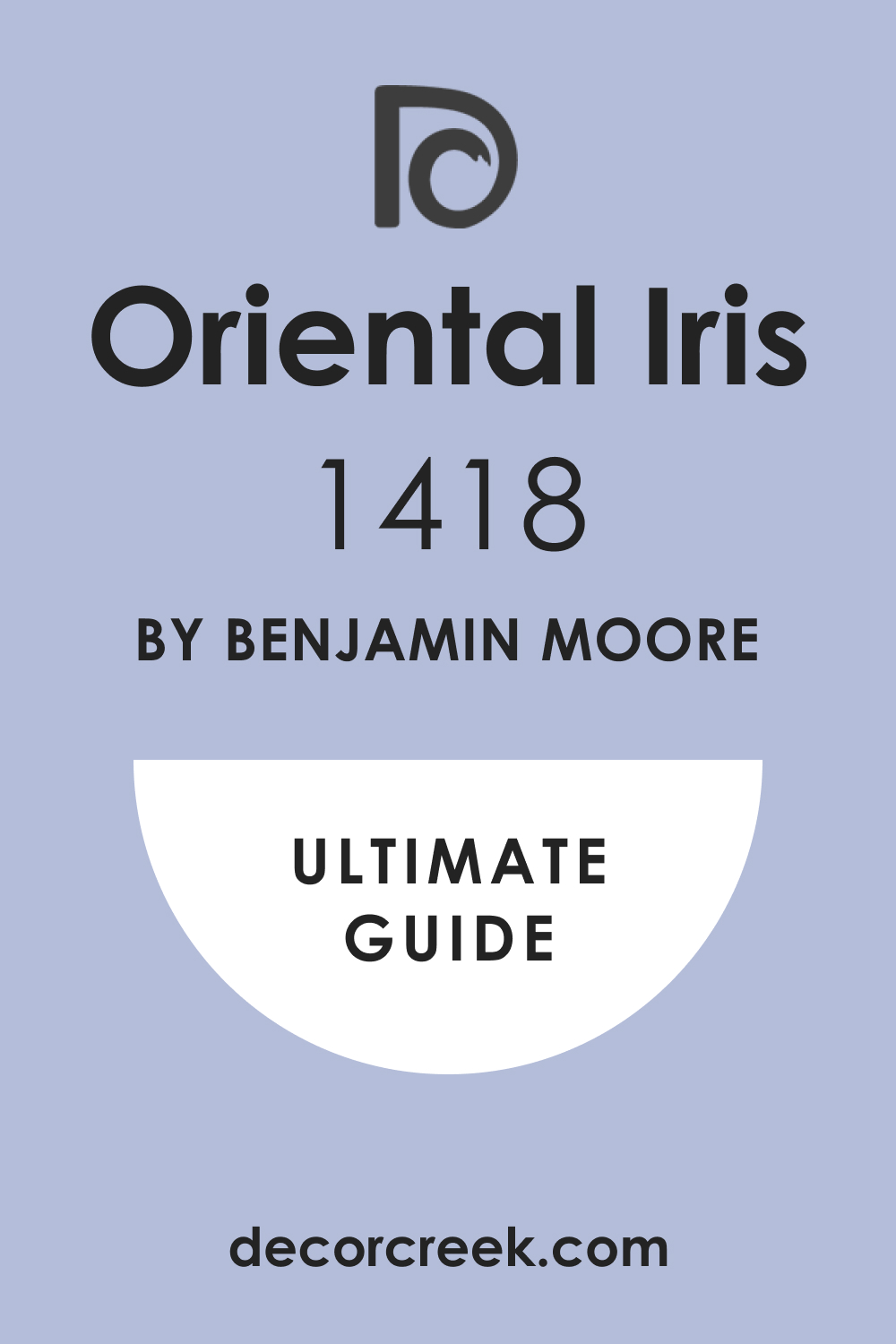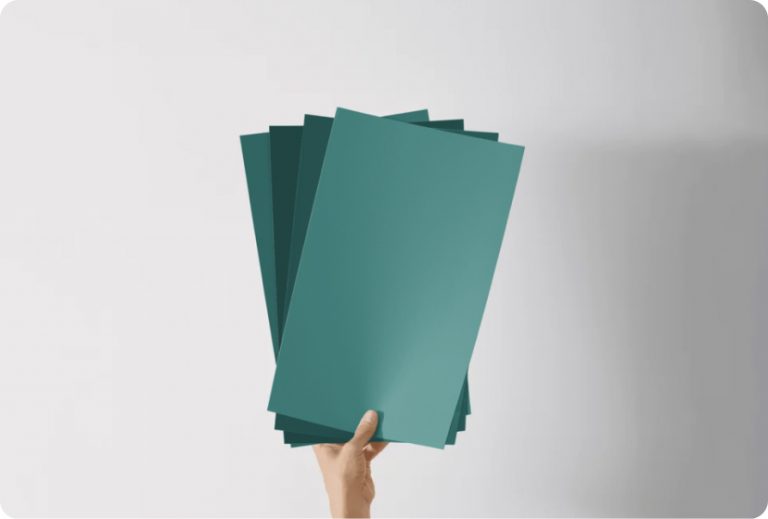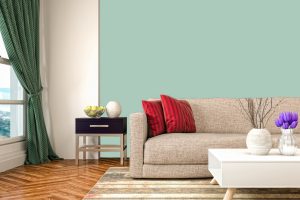When one thinks of the palette that colors our world, often the natural hues come to mind. But within the spectrum of paints, there is a particular shade that evokes both the serenity of nature and the depths of sophistication: Oriental Iris 1418.
This complex color dances on the line between the earthly and the ethereal, and its application in interiors speaks volumes about the character of a space.
In this comprehensive look, we will delve deep into what makes Oriental Iris 1418 a standout shade, from its temperature and undertones to its performance under different lighting conditions and coordinating colors that enrich its potential within a living space.
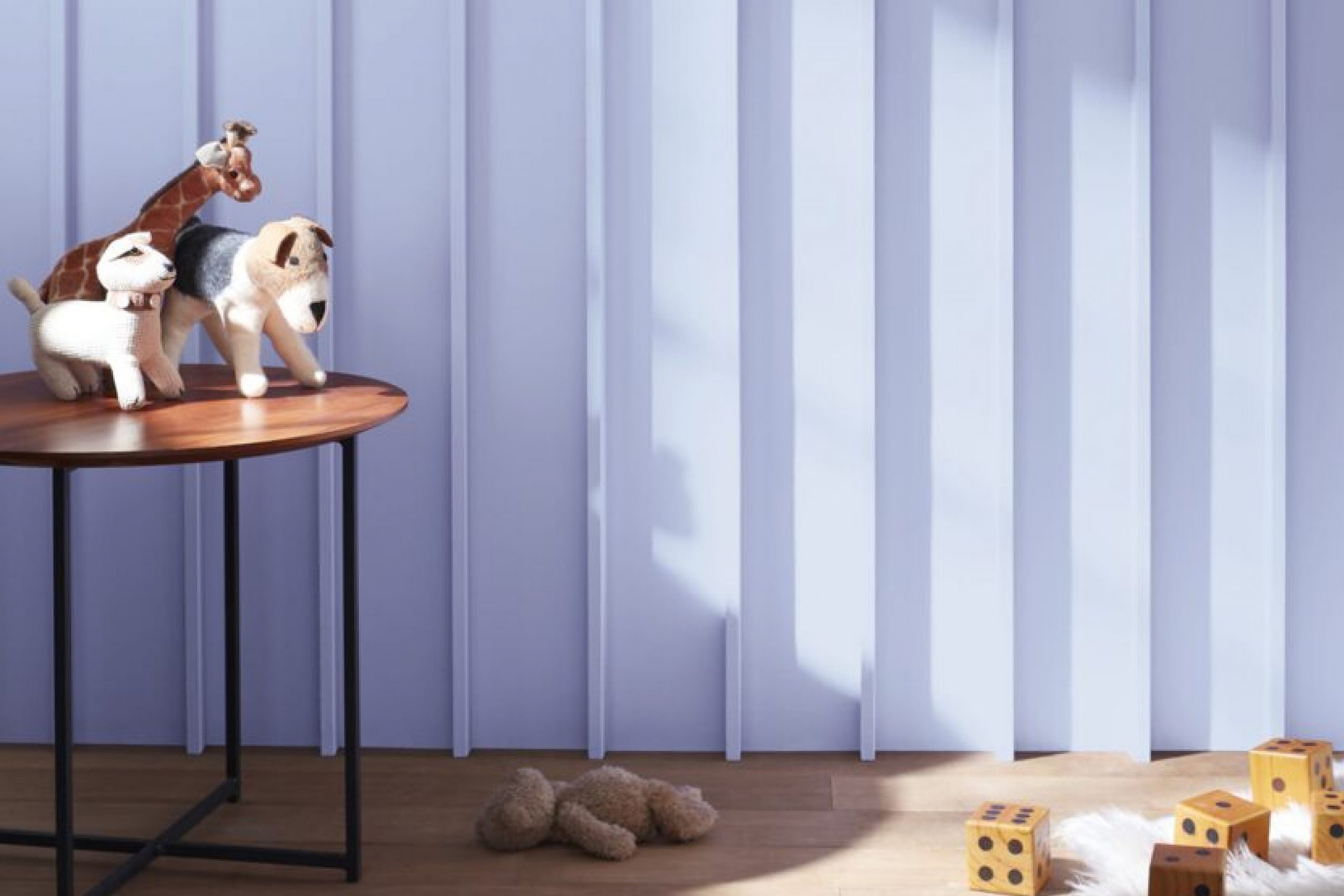
What Color Is Oriental Iris 1418?
Oriental Iris 1418 is a captivating color that seems to capture the ephemeral beauty of an iris flower at dawn. It’s not just blue; it has a purplish tinge that adds a layer of depth and mystery. This hue could be likened to the soft whisper of a breeze through a tranquil garden, exuding calmness and sophistication. Its specific quality lies in its ability to be both grounding and uplifting, offering a backdrop for interiors that calls for contemplation and elegance.
In terms of interior styles, Oriental Iris 1418 thrives in settings that aim for a blend of modernity and timeless grace—think minimalistic spaces that capitalize on the color’s serene qualities or classic environments where its depth adds a touch of majesty.
It pairs exquisitely with materials that have a subtle sheen, such as satin or silk, which highlight its luxurious undertones, and textures that are rich and inviting like velvety upholstery or fluffy area rugs, which contrast its smooth finish.

Ever wished paint sampling was as easy as sticking a sticker? Guess what? Now it is! Discover Samplize's unique Peel & Stick samples.
Get paint samples
Is It a Warm Or Cool Color?
Oriental Iris 1418 leans towards the cooler end of the spectrum. It has the ability to introduce a sense of calm and collectedness into any space. This cool demeanor makes it an excellent choice for rooms that are meant to be havens of relaxation and reflection, such as bedrooms and bathrooms.
The coolness of Oriental Iris 1418 means it works to balance spaces that receive a lot of sunlight, maintaining a sense of freshness throughout the day. Conversely, in a dimly lit room, it may need balancing with warm hues to prevent it from feeling too chilly.
The effect of this color in homes is thus a delicate dance between the inherent coolness of its hue and the ambient warmth of the room it adorns.
Undertones of Oriental Iris 1418
The undertones of a color are the hues that subtly radiate from beneath its primary shade, influencing perception and feel. Oriental Iris 1418 possesses undertones that are reminiscent of a twilight sky; there’s a hint of dusky violet lurking within its blue, giving it a layered complexity.
These undertones are what make the color so versatile and enigmatic, allowing it to complement a myriad of design elements.
On interior walls, the undertones of Oriental Iris 1418 can bring out different moods depending on the lighting and surrounding colors. They can make a room feel cooler and more introspective or, when paired with the right accents, can draw out a touch of warmth and welcome.
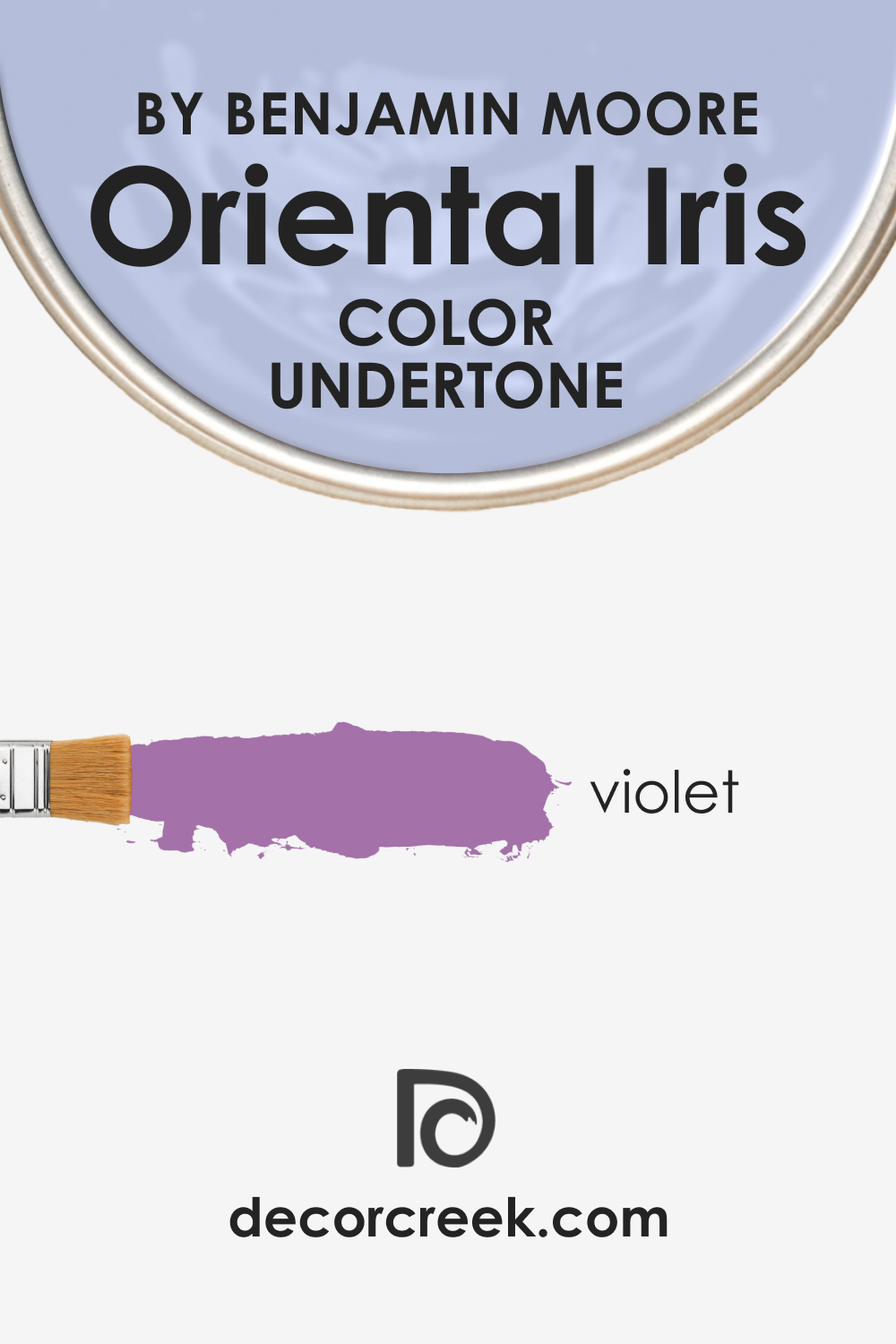
Coordinating Colors of Oriental Iris 1418
Coordinating colors are those that harmonize with the main color, enhancing its beauty and allowing for a cohesive look in interior design. For Oriental Iris 1418, coordinating colors should have a balance that neither overpowers nor underwhelms its unique tone.
- BM 869 Oxford White: A crisp and clean white that brings out the coolness of Oriental Iris 1418 without stark contrast.
- OC-17 White Dove: A soft and warm white that offers a subtle contrast and creates a soothing palette.
- BM 972 Alaskan Skies: A neutral with a hint of beige, it complements the earthy side of Oriental Iris 1418.
- HC-178 Charcoal Slate: A deep and moody gray that adds a sophisticated edge to the color’s tranquil nature.
Three additional colors that coordinate well with Oriental Iris 1418 are:
- BM 1625 Blue Lace: A pale, airy blue that echoes the tranquility of Oriental Iris 1418.
- BM 1648 Slate Blue: Soft and subtle, this color pairs well, providing a gentle contrast.
- HC-144 Palladian Blue: A greenish-blue hue that harmonizes with the cool and calm nature of Oriental Iris 1418.
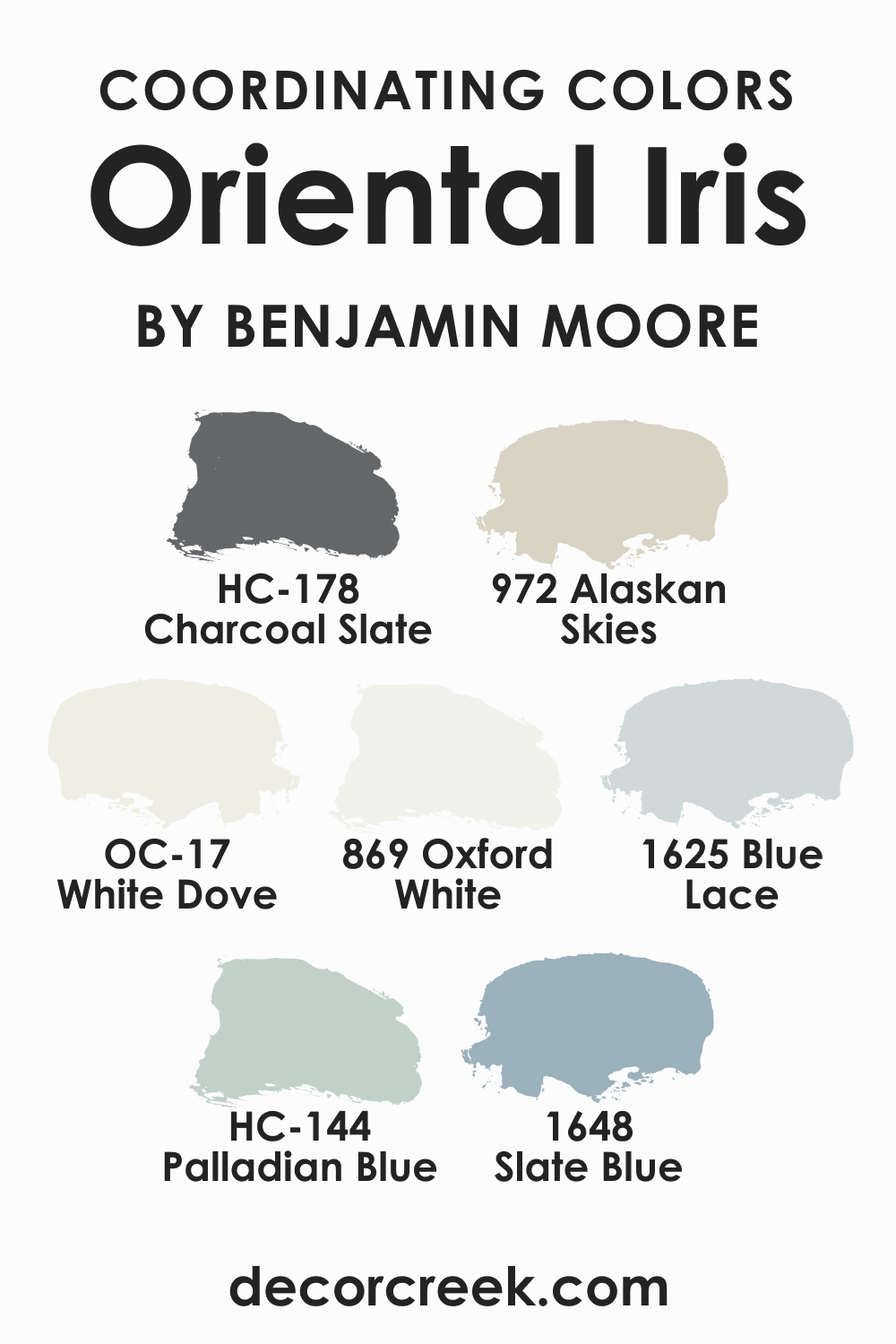
How Does Lighting Affect Oriental Iris 1418?
Lighting plays a pivotal role in how colors are perceived, and Oriental Iris 1418 is no exception. Under natural light, this color can appear serene and true to its nature, with its bluish-purple tones shining through. However, in artificial light, depending on the type (warm or cool), it may either accentuate the blue or bring forward the subtle purple undertones.
In north-facing rooms, which tend to have cooler, softer light, Oriental Iris 1418 maintains its calm and cool poise. In south-facing rooms, the ample sunlight can wash out colors, but Oriental Iris 1418 has enough depth to hold its own, though it may appear slightly bluer.
East-facing rooms see the warm morning light, which can make the color feel more welcoming, while in west-facing rooms, the color can shift throughout the day—from a refreshing tone in the morning to a more introspective hue by evening.
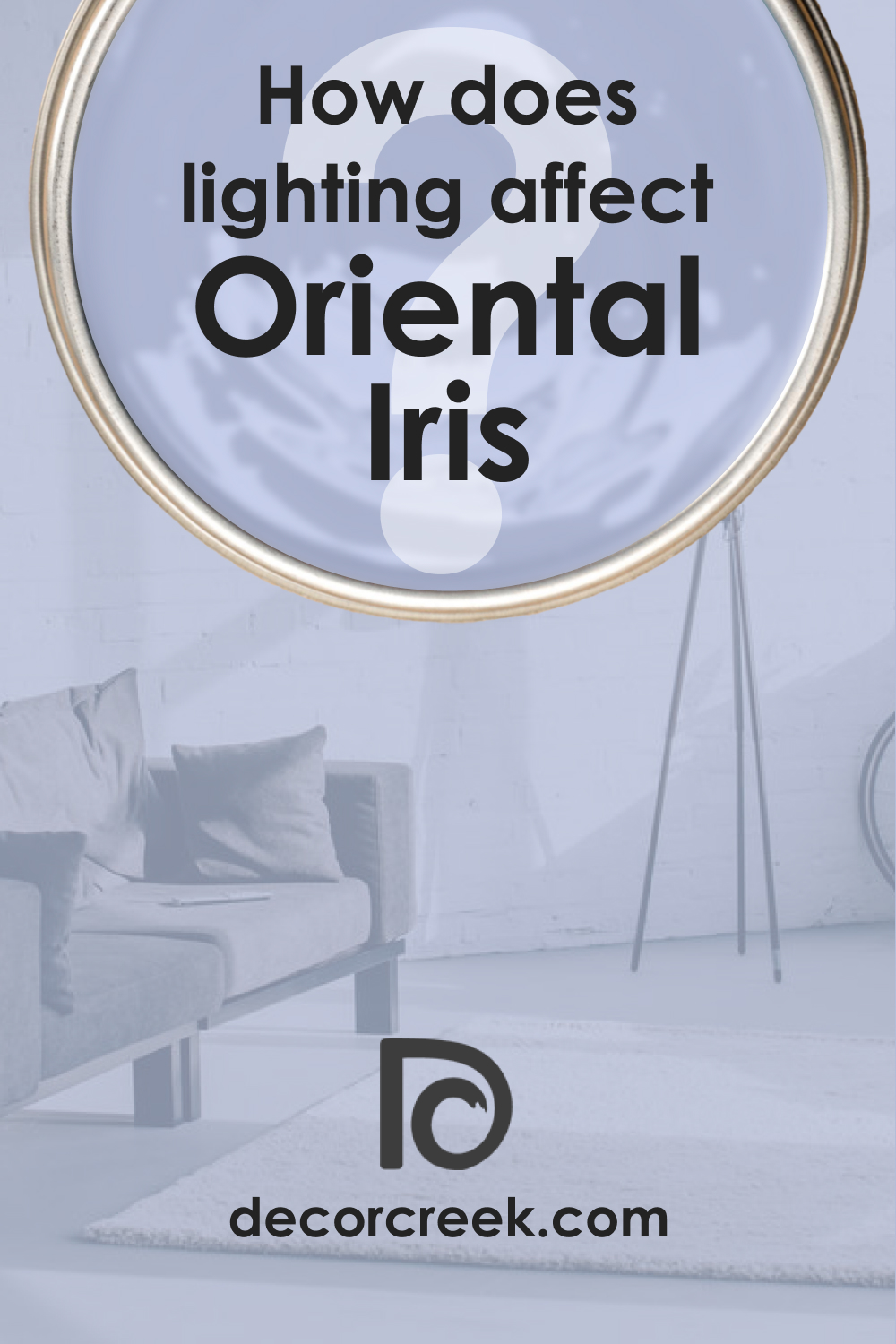
LRV of Oriental Iris 1418
Light Reflectance Value (LRV) measures the percentage of light a paint color reflects. With an LRV of 51, Oriental Iris 1418 sits at the midpoint of the scale, meaning it has a balanced reflectance that isn’t too overwhelming in brightness nor too absorbing in darkness. This value suggests that the color can serve to either uplift or ground a room depending on the surrounding elements.
The LRV affects how Oriental Iris 1418 will look on walls in different lighting conditions. It has enough luminosity to reflect natural light and create a sense of space, yet it possesses a saturation level that ensures it retains its character even in a brightly lit room.
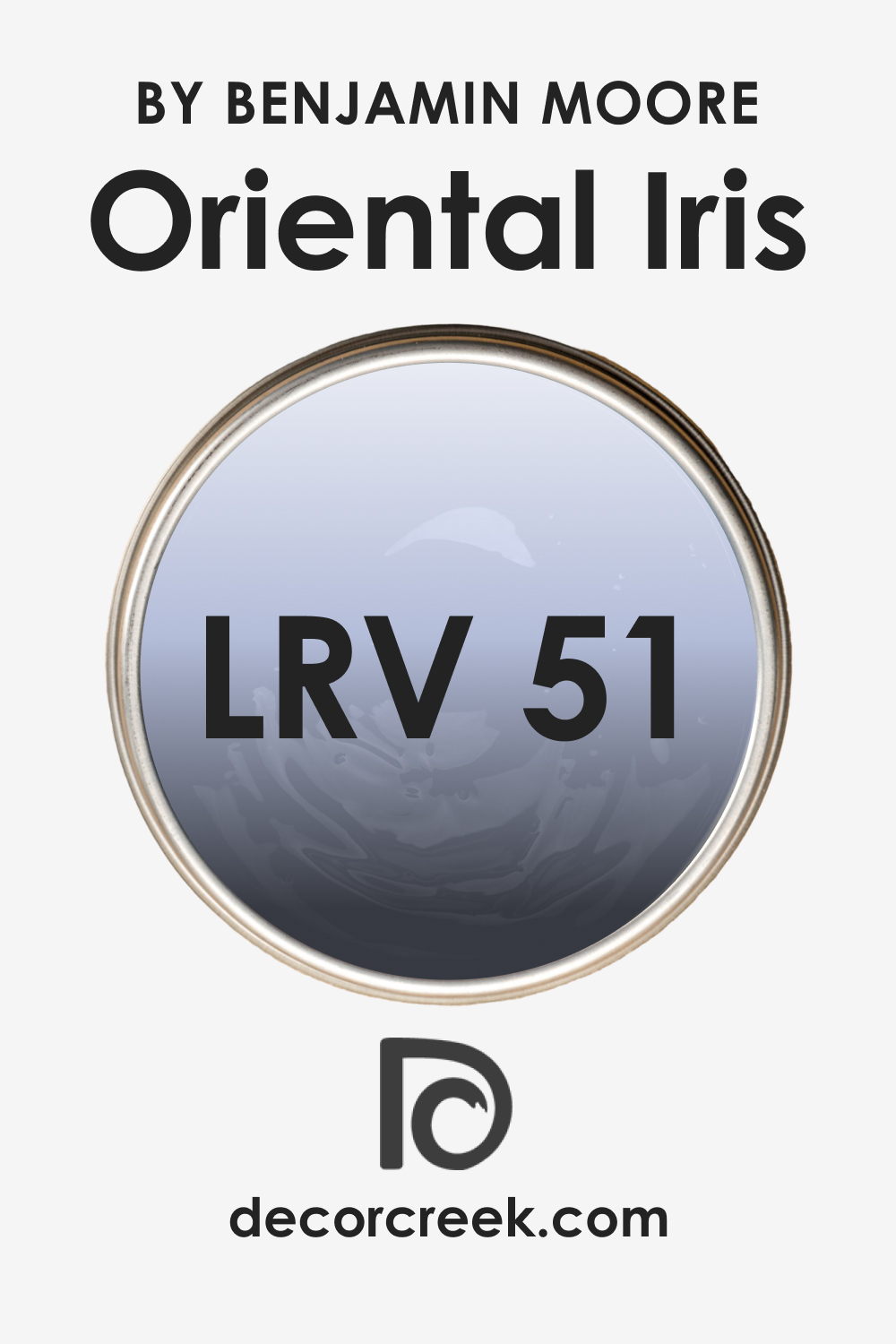
LRV – what does it mean? Read This Before Finding Your Perfect Paint Color
Trim Colors of Oriental Iris 1418
Trim colors, often used for molding, door frames, and baseboards, are essential for defining and enhancing the overall aesthetic of a room. With Oriental Iris 1418, trim colors should be chosen to either contrast cleanly or complement subtly. Here are three shades of white from the same brand that can be used:
- OC-152 Super White: A bold and brilliant white that can create a sharp contrast for a contemporary look.
- OC-65 Chantilly Lace: Known for its purity and clarity, it offers a seamless transition without stark contrasts.
- OC-130 Cloud White: A softer white with a touch of creaminess that warms up the cool tones of Oriental Iris 1418.
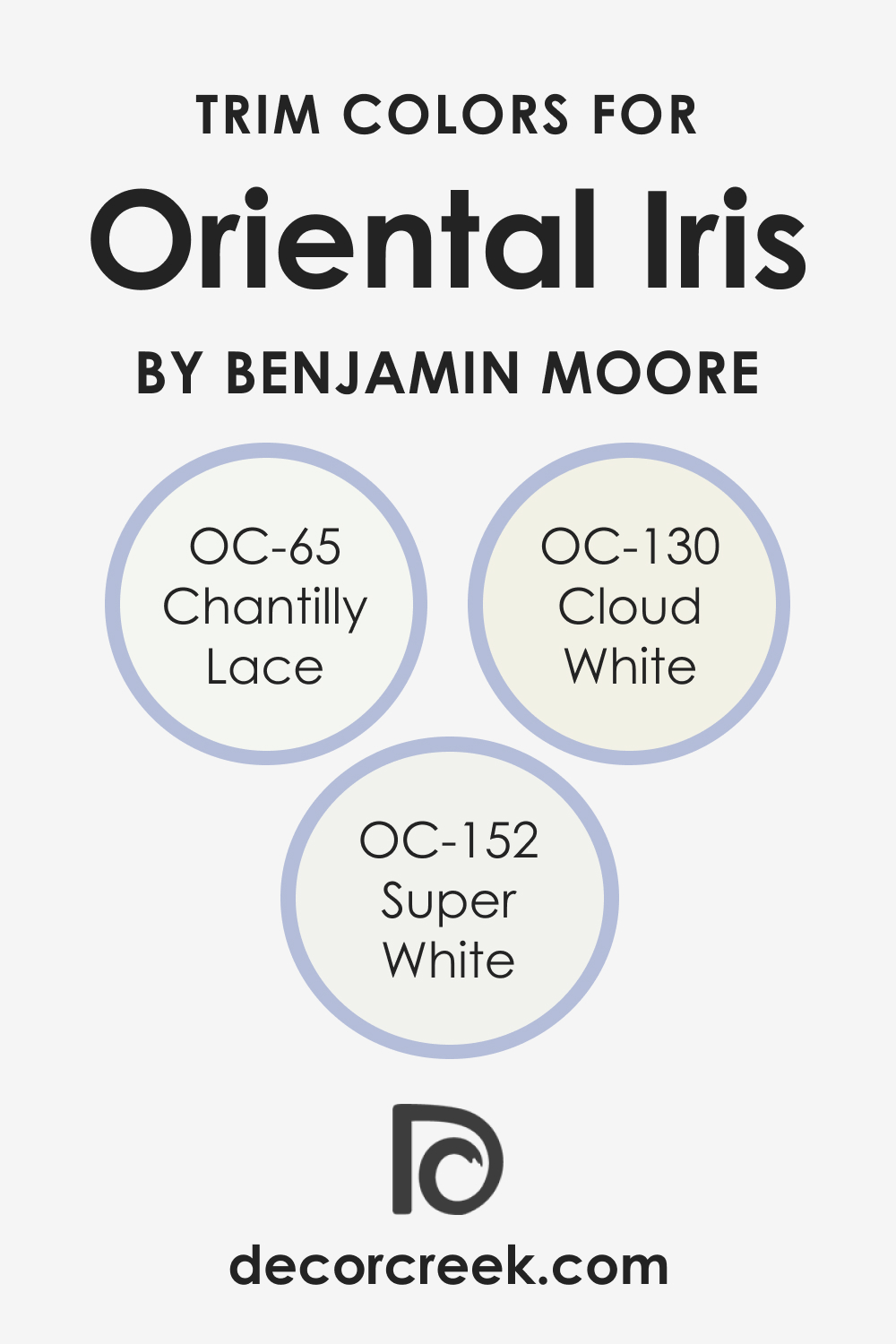
Colors Similar to Oriental Iris 1418
Knowing similar colors is crucial for creating a nuanced and layered interior design. Colors similar to Oriental Iris 1418 provide alternatives for matching decor or paint in different lighting or alongside varying textures. Here are a few:
- BM 1431 Feather Soft: A gentle blue with a grayish tone that shares the serene qualities of Oriental Iris 1418.
- BM 1424 Blue Viola: More pronounced in its purple undertones, it complements the depth of Oriental Iris 1418.
- BM 2069-50 Blue Orchid: A vibrant blue that captures the eye, yet maintains a level of softness akin to Oriental Iris 1418.
- BM 1432 Freesia: An ethereal purple that nods to the subtler tones within Oriental Iris 1418.
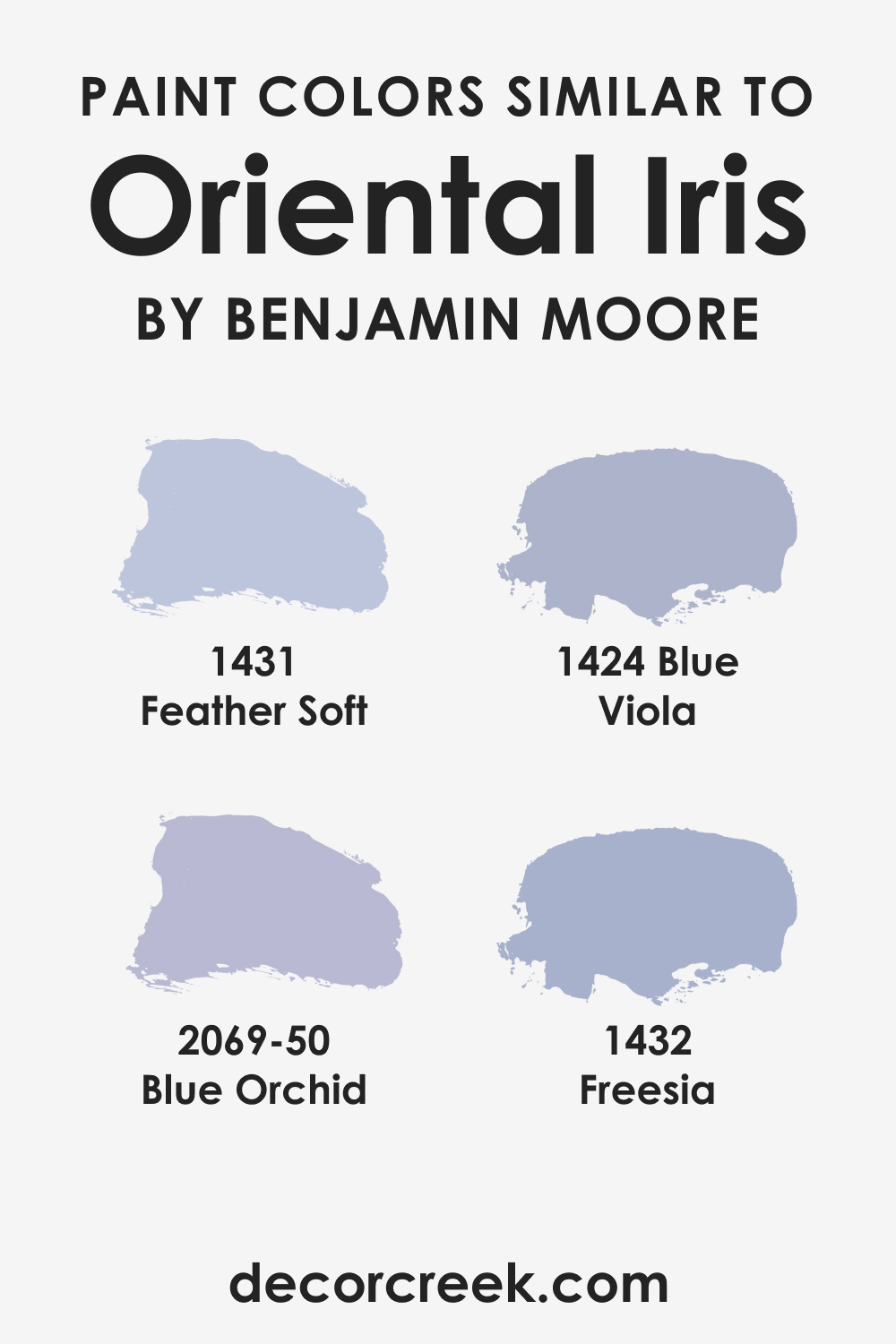
Colors That Go With Oriental Iris 1418
The importance of colors that go well together cannot be overstated—they ensure a harmonious and balanced design that is pleasing to the eye. When paired thoughtfully, the right colors can enhance the mood and aesthetic of a space. For Oriental Iris 1418, here are Benjamin Moore colors that pair beautifully:
- BM 1475 Graystone: A mid-tone gray that provides a grounding effect.
- BM 1478 Horizon: A soft gray with green undertones that complement the coolness of Oriental Iris 1418.
- BM 1495 October Mist: A subtle sage that resonates with the natural aspect of the color.
- BM 1549 Balboa Mist: A warm gray that softens the palette and adds versatility.
- BM 1552 River Reflections: A rich beige that bridges the gap between neutrality and depth, highlighting the sophisticated side of Oriental Iris 1418.
By understanding the various elements that contribute to the perception of Oriental Iris 1418, from its undertones and coordinating colors to its LRV and ideal trim pairings, designers and homeowners alike can harness its full potential.
This color’s versatility allows it to adapt from a statement wall in a minimalist room to a soothing backdrop in a classic setting, proving that it is indeed a remarkable choice for those seeking both peace and elegance in their interiors.
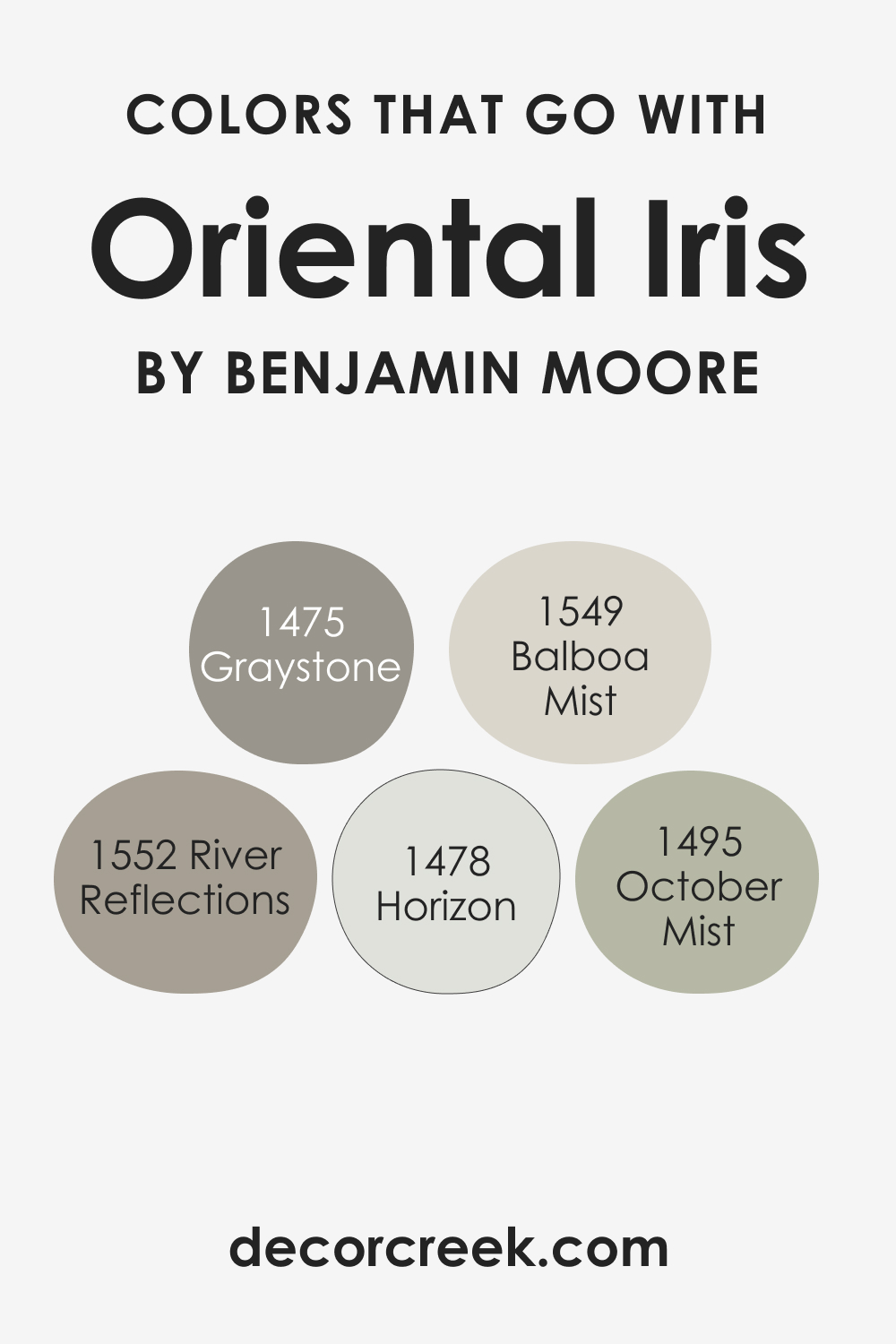
How to Use Oriental Iris 1418 In Your Home?
Oriental Iris 1418’s versatility allows it to flourish in various rooms, from creating a tranquil sanctuary in bedrooms to offering a contemplative ambiance in home offices. Its cool, subdued nature fits perfectly within the Scandinavian style, where simplicity and calm are key, or in contemporary settings that favor bold, clean lines and color sophistication.
In more traditional or transitional spaces, this color adds a depth that can contrast beautifully with classic woodwork and detailed architecture.
Whether used as an accent wall in a living room or as a soothing backdrop in a dining area, Oriental Iris 1418 invites a unique blend of sophistication and serenity into your home.
How to Use Oriental Iris 1418 in the Bedroom?
In the bedroom, Oriental Iris 1418 is the perfect hue for fostering a restful and regal retreat. Consider painting all walls in this hue for a cocoon-like feel or using it on an accent wall behind the bed to create a focal point. Complement the color with light, airy fabrics and silver or glass accents to enhance its tranquil quality. For a more dramatic effect, pair with dark wood furniture or pops of mustard or coral in accessories. Embracing minimalist principles, allow the color itself to be the standout element for a modern, clean look that promotes rest and relaxation.
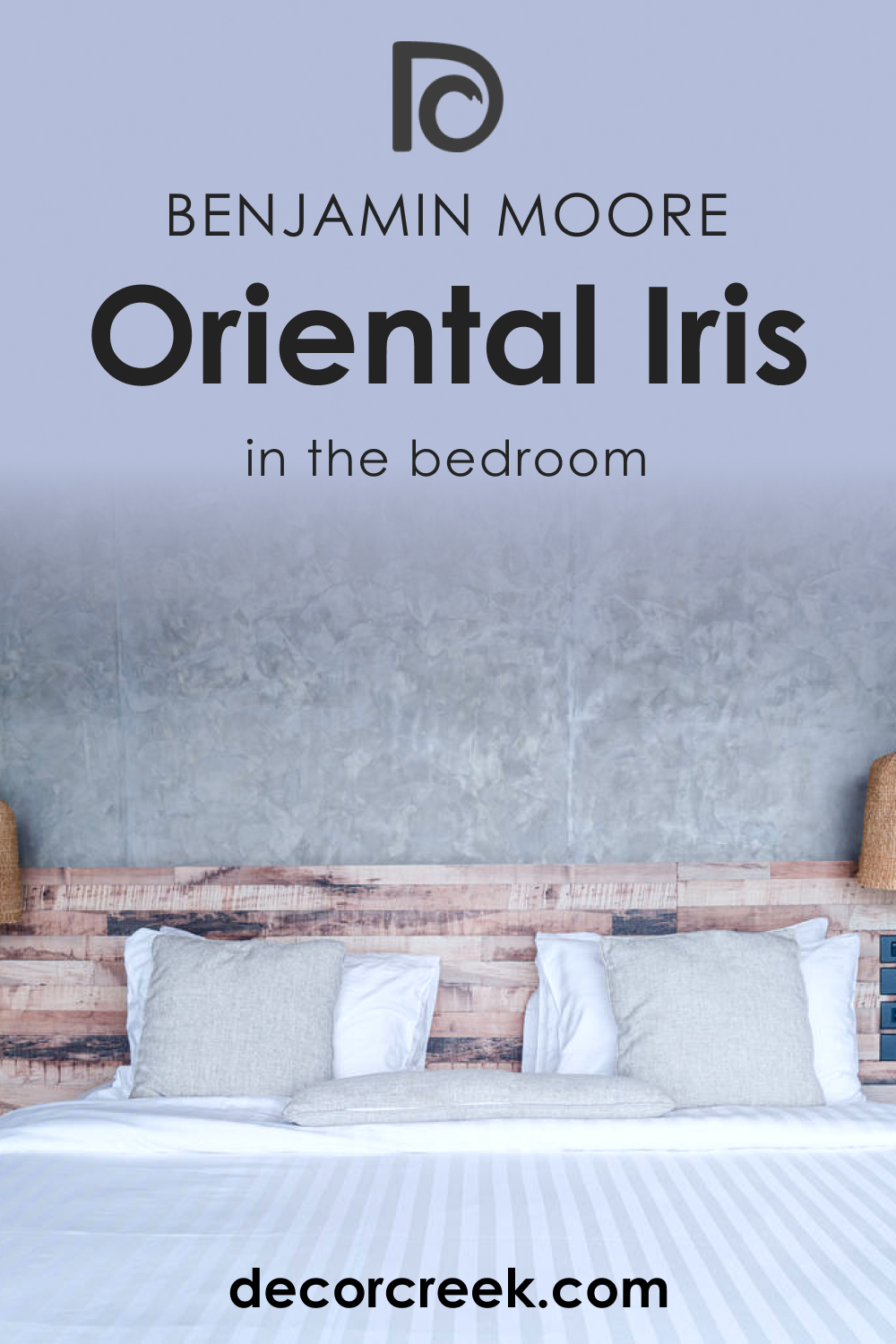
How to Use Oriental Iris 1418 in the Bathroom?
Transform your bathroom into a serene spa with Oriental Iris 1418. Its soothing tones work well with natural elements like stone tiles or wood accents, creating a space that feels both grounded and ethereal. Use it on all walls for a full immersive effect, or on cabinetry for a subtle nod to elegance. Pair with brushed nickel or chrome fixtures to highlight its cool undertones. For an added touch of luxury, use marble countertops or backsplash to create a space that feels like a retreat from the world.

How to Use Oriental Iris 1418 in the Living Room?
Oriental Iris 1418 can create a statement in the living room without overwhelming the space. Apply it on a feature wall to anchor the room with a sense of depth, or envelop the room completely for a more intimate atmosphere. This color pairs well with plush textiles and rich woods, bringing out a sophisticated yet cozy feel. Balance it with neutral furniture or inject some warmth with accents in rust or golden hues. Oriental Iris 1418’s adaptability makes it suitable for a range of living room styles, from modern minimalist to a more classic aesthetic.
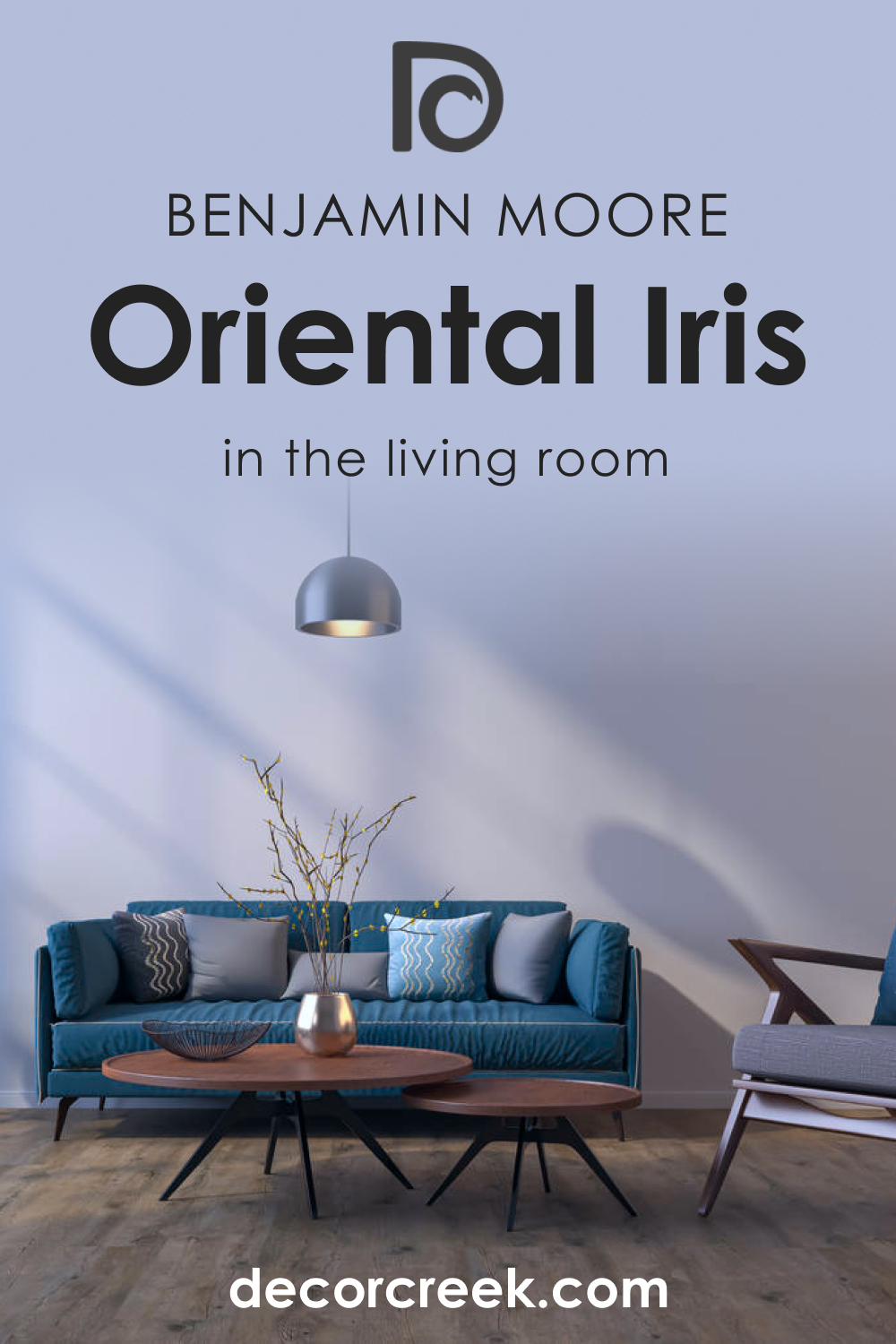
How to Use Oriental Iris 1418 for an Exterior?
Oriental Iris 1418 is not just for interiors; it can also create an intriguing and inviting exterior. It works especially well on doors, shutters, or trim as a complementary color against a more neutral facade. For a modern look, combine it with stark whites or grays.
In landscapes that include a lot of greens and natural tones, Oriental Iris 1418 can add a contemporary touch without clashing with its environment. Be sure to test large swatches outside, as lighting plays a crucial role in how this color presents itself in an exterior setting.

How to Use Oriental Iris 1418 in the Kitchen?
In the kitchen, Oriental Iris 1418 can serve as a stunning backdrop or as an accent color. For a fresh, modern vibe, paint walls in this hue and pair with white cabinets and stainless-steel appliances. If you’re adventurous, consider a contrasting backsplash in terracotta or moss green tiles to bring warmth into the space.
For a softer look, mix it with light wood tones and open shelving featuring minimalist decor. The calming effect of Oriental Iris 1418 can transform your kitchen into a space that’s not just for cooking, but also for gathering and unwinding.

How to Use Oriental Iris 1418 on the Kitchen Cabinets?
Using Oriental Iris 1418 on kitchen cabinets creates a unique and sophisticated focal point. This color works particularly well on lower cabinets, with upper cabinets painted in a lighter coordinating color like BM 869 Oxford White for a grounded yet airy feel. Accentuate the cabinets with hardware in brushed brass or matte black for a contemporary twist.
For a seamless look, carry the color onto a center island, creating a cohesive and stylish kitchen atmosphere. Ensure adequate lighting to make the space feel inviting, as this color can become quite deep in lower light settings.

Comparing Oriental Iris 1418 With Other Colors
Comparing different colors is pivotal in design because it allows for an understanding of how each hue interacts with light, other colors, and within a given space. Color comparison can highlight subtle undertones, offer insights into color psychology, and help create a desired mood or effect. When selecting paint, comparing similar shades like Oriental Iris 1418 with others can pinpoint the exact atmosphere one wishes to evoke.
It ensures that the final choice aligns with the decorative elements and functional intentions of a room, enabling a harmonious and aesthetically pleasing environment.
Oriental Iris 1418 vs. BM 1415 Lavender Secret
Oriental Iris 1418 and BM 1415 Lavender Secret may seem similar at first glance, but they diverge in emotional tone and spatial impact. Lavender Secret possesses a softer, more ethereal quality with a pronounced lavender essence, lending it to spaces seeking a gentle, whimsical feel.
Oriental Iris 1418, with its grounding gray undertones, offers more formality and composure. In a bedroom, Lavender Secret whispers relaxation, while Oriental Iris implies a more contemplative and serene retreat.

Oriental Iris 1418 vs. BM 1416 Whispering Wind
While Oriental Iris 1418 carries the mystery of twilight skies, BM 1416 Whispering Wind is akin to a gentle dawn haze. Whispering Wind has a lighter touch, with a breathier presence that can open up a space. It’s ideal for smaller rooms or areas with limited natural light.
Oriental Iris 1418, in contrast, brings depth and a touch of sophistication, making it well-suited for larger or well-lit spaces where its full richness can be appreciated without overpowering.
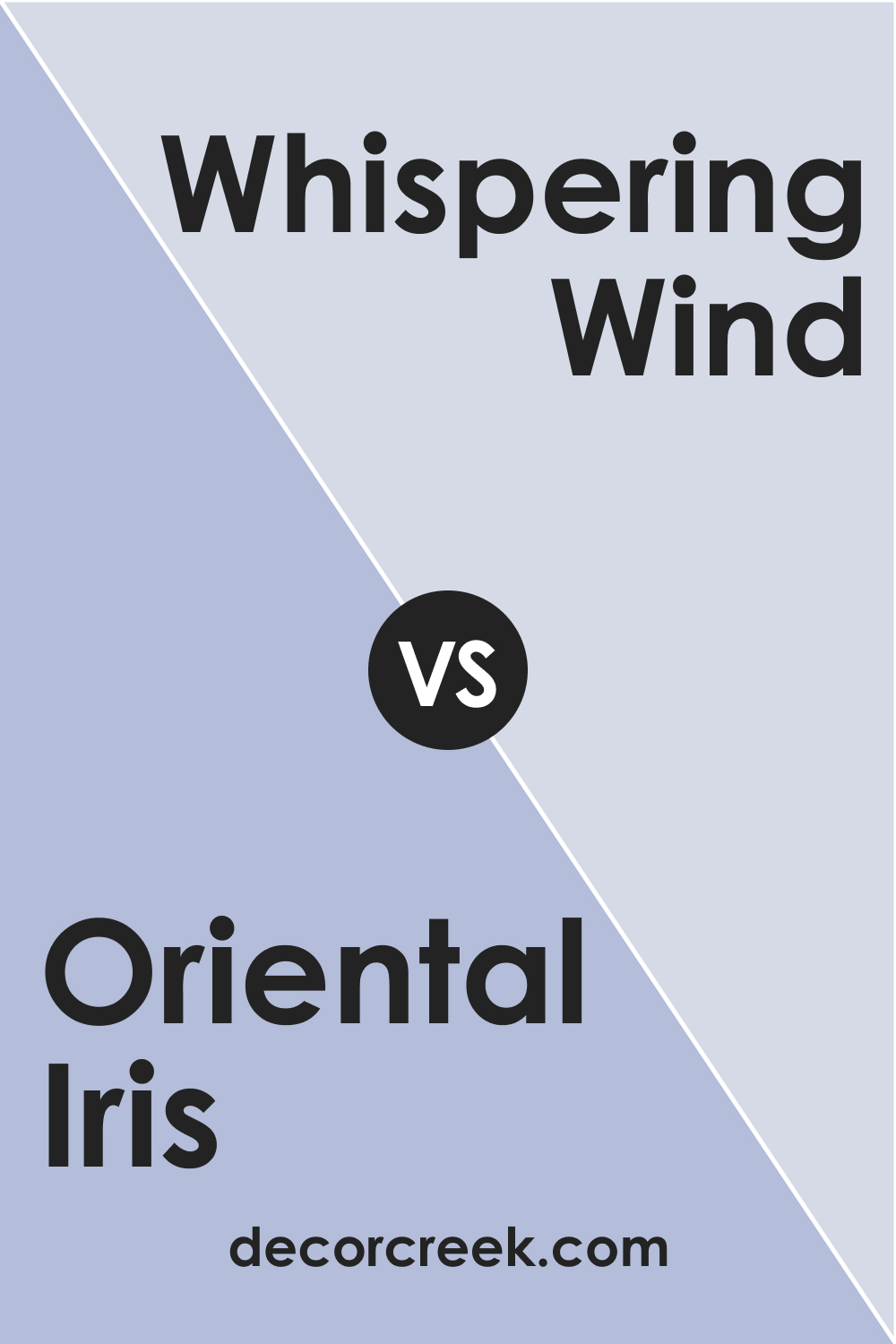
Oriental Iris 1418 vs. BM 1417 English Hyacinth
Oriental Iris 1418 and BM 1417 English Hyacinth share a floral inspiration but bloom in different lights. English Hyacinth has a sunnier disposition, with a yellow undertone that makes it warmer and more inviting. It’s the color of spring’s first flowers, perfect for a sunroom or kitchen.
Oriental Iris, with its cooler demeanor, suits tranquil spaces like a study or a bathroom, where the goal is relaxation and introspection rather than energetic vibrancy.
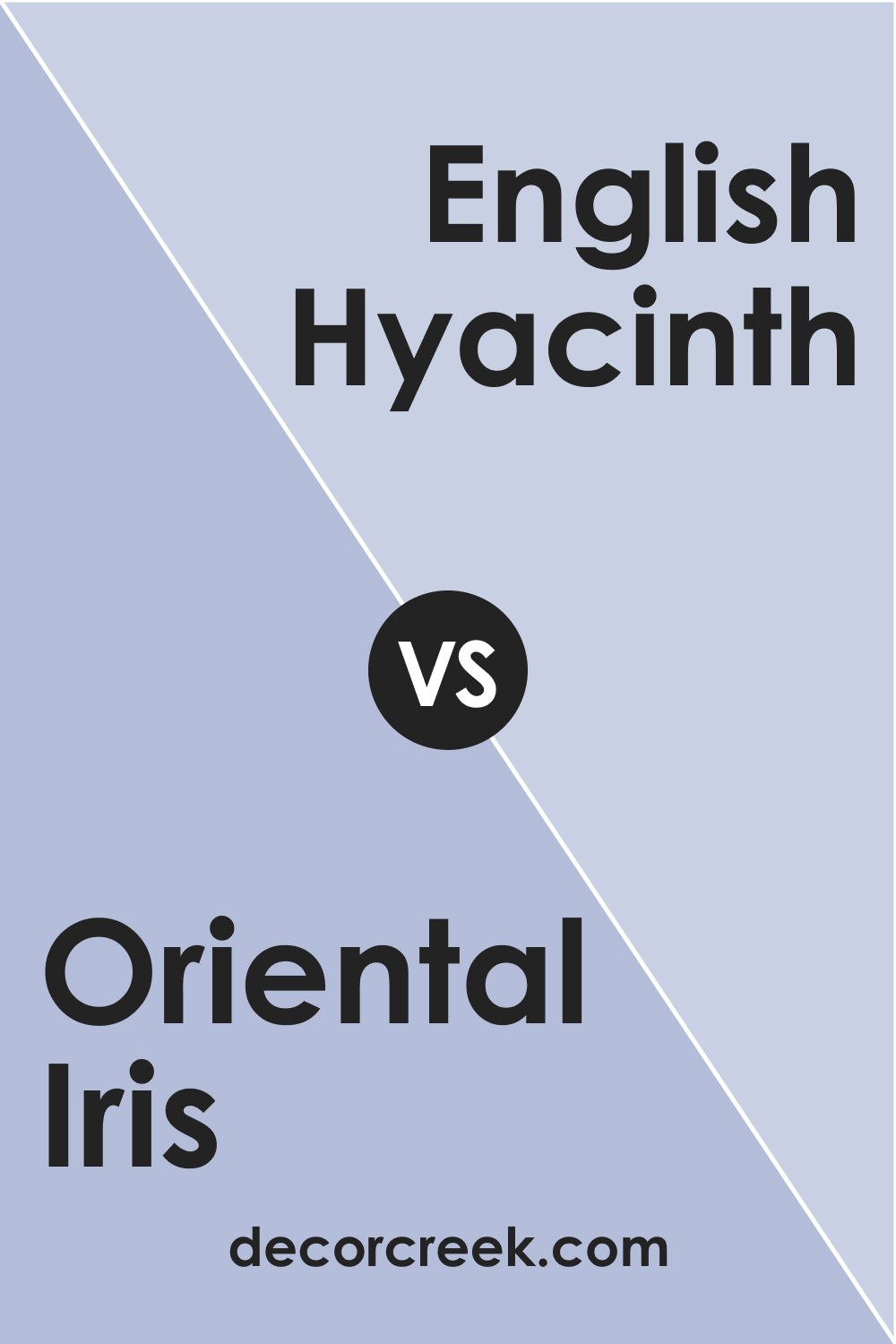
Oriental Iris 1418 vs. BM 1419 Persian Violet
Oriental Iris 1418 and BM 1419 Persian Violet offer a dance between subtlety and statement. Persian Violet, with its more saturated and richer purple tone, serves as a regal backdrop, bold and imaginative. It demands attention and is best used where its intensity can be celebrated. Oriental Iris 1418, on the other hand, is a study in restraint, making it a better choice for a refined ambiance that’s sophisticated without being ostentatious.
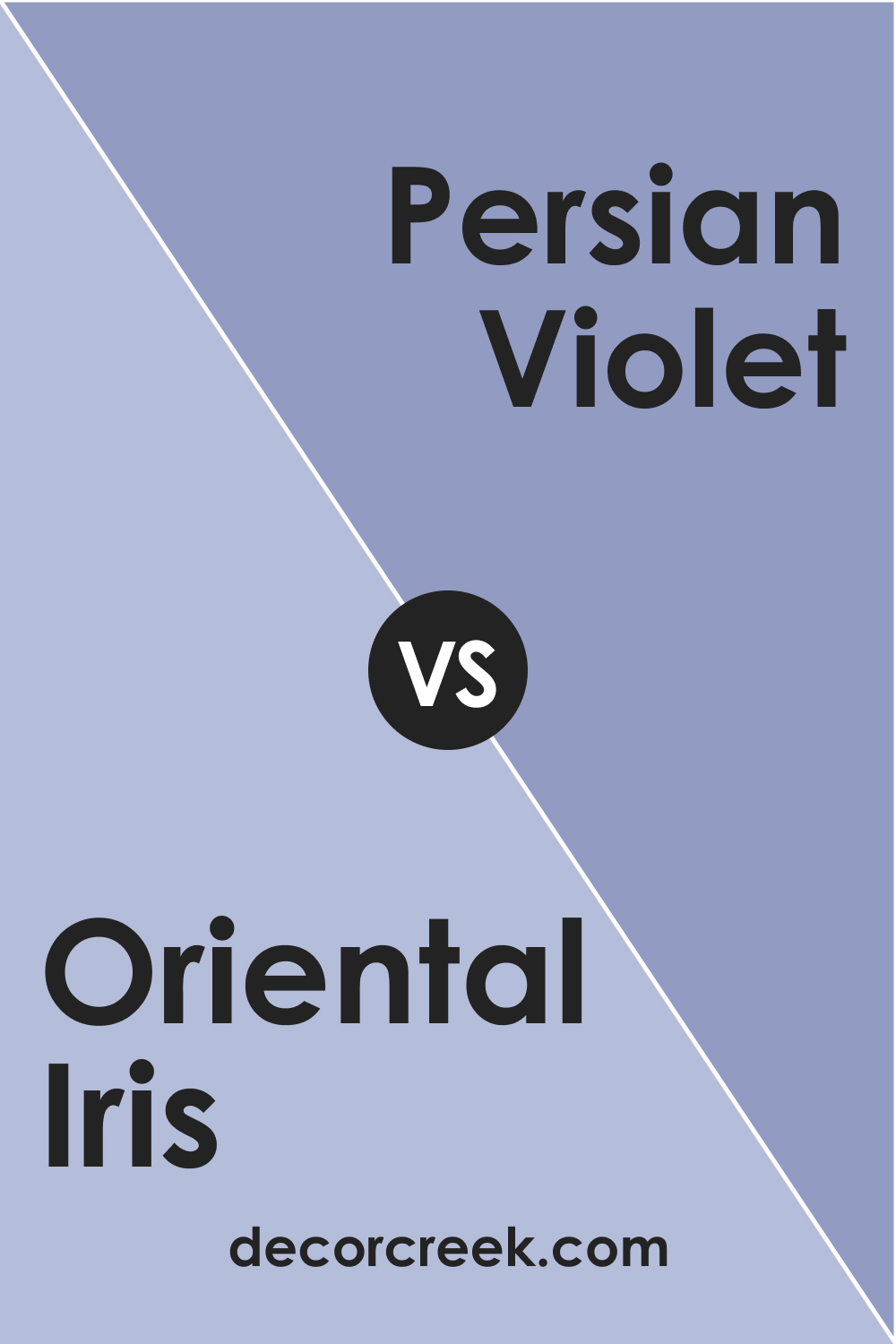
Oriental Iris 1418 vs. BM 1420 Softened Violet
BM 1420 Softened Violet presents as a more diluted, airier version of Oriental Iris 1418. With its higher value, Softened Violet reflects more light, making it a superb option for a peaceful, restful setting such as a nursery or a minimalist living area. Oriental Iris 1418’s deeper tone offers a stronger character, suitable for a dramatic effect or for anchoring a space with more saturated color.
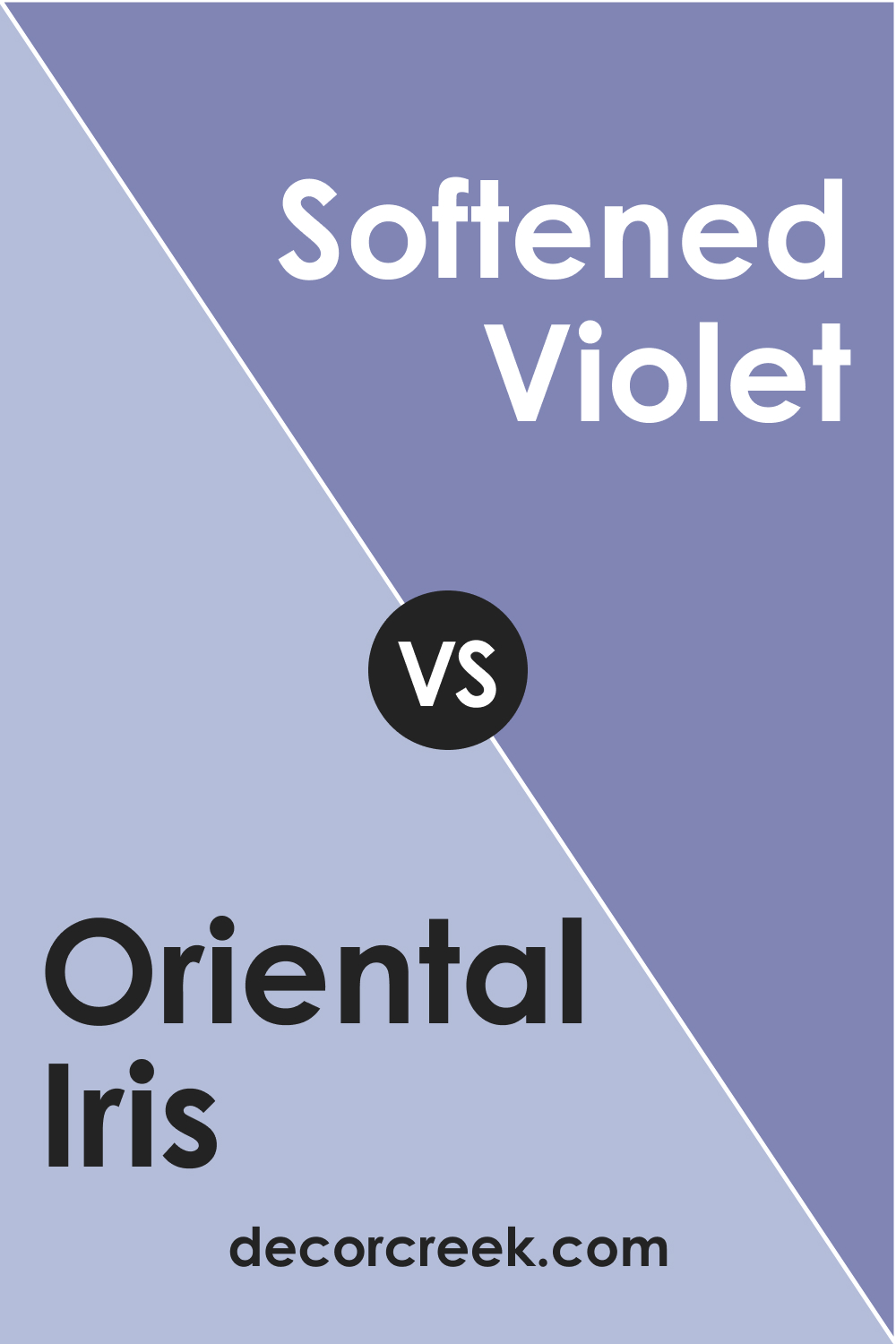
Oriental Iris 1418 vs. BM 1421 Bistro Blue
BM 1421 Bistro Blue diverges from the floral path of Oriental Iris 1418 and walks into the realm of the skies at dusk. Bistro Blue has a clarity and crispness that can invigorate a space, evoking a more traditional blue without the contemplative depth of Oriental Iris.
Where Oriental Iris 1418 could serve as a neutral backdrop, Bistro Blue stands as a clear statement, pairing well with crisp whites and sandy neutrals for a classic, nautical vibe.

Conclusion
The exercise of comparing Oriental Iris 1418 with other reveals the importance of nuances in interior design. Each color carries its own weight, story, and impact, thus the selection process becomes more than just picking a shade; it’s about crafting an environment that aligns with the inhabitants’ emotional and aesthetic needs.
Oriental Iris 1418, with its versatile nature, can either step into the spotlight or support as a backdrop, adapting fluidly within various design narratives. Its comparison with other colors not only showcases its unique qualities but also underscores the fact that every color has a distinct personality, capable of transforming a mere space into ‘your’ space.
